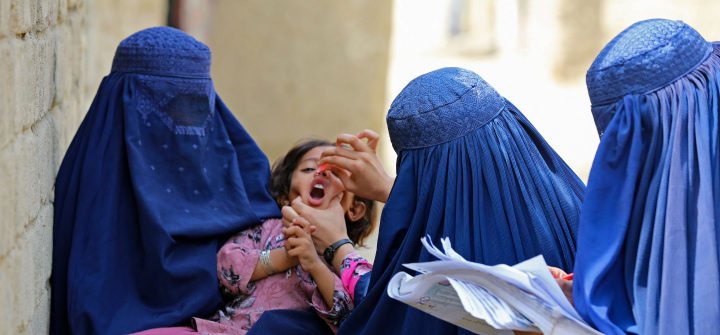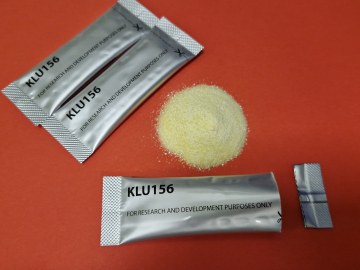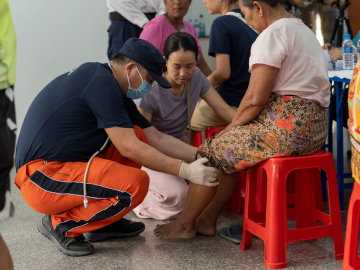Polio Eradication Through Innovation
Today, the world is closer than ever to eradicating an ancient disease thanks to proven tools and brand-new innovations.
For thousands of years, poliovirus spread unchecked, paralyzing children and sowing fear in communities around the world. Just 3 decades ago, hundreds of thousands of children were paralyzed by polio annually. Since then, the Global Polio Eradication Initiative, along with governments, donors, and frontline health workers, has committed to ending polio worldwide—by protecting all children with polio vaccines.
Promising trends suggest that poliovirus is finally on its last leg. 2 out of the 3 strains of wild poliovirus have been wiped out, and so far this year, just 7 cases of the remaining wild virus strain have been reported across 2 countries, Afghanistan and Pakistan.
Actions taken now will decide whether today’s and future generations can grow up in a polio-free world. To get there, we must use everything at our disposal, including proven solutions and innovative new tools.
Delivered by a simple dropper, the oral polio vaccine (OPV) is as proven a tool as exists in global health. It’s inexpensive and easy for vaccinators to transport and administer. Because it can both protect the individual child and stop person-to-person transmission, OPV has brought poliovirus to its knees.
But in areas where not enough children receive OPV, the weakened strain of poliovirus it contains can pass amongst the community. And over time, that strain can revert to a variant form and spread like the wild viruses to cause paralysis.
Stopping variant polio outbreaks is essential to achieving eradication, which is why a next-generation oral polio vaccine, nOPV2, has been developed and rolled out. So far, nOPV2 has proven to be significantly less likely to revert to a paralytic form. Close to 700 million doses have already been delivered in more than 30 countries, helping protect millions of children in the highest risk communities.
In the face of variant polio outbreaks, some scientists have called to stop the use of oral polio vaccines immediately and instead use the inactivated polio vaccine (IPV). IPV is excellent at preventing infection of the nervous system, which causes paralysis. There is no doubt that high IPV coverage through routine immunization is key to sustaining a polio-free world, especially after eradication is achieved. And because IPV does not contain the live virus, it does not carry the same risk of reversion as OPV.
However, IPV is not as effective in stopping person-to-person transmission, particularly in low-and-middle income countries with poor hygiene and sanitation, where the fecal-to-oral spread of poliovirus is known to be the predominant mode of transmission. In contrast, OPV is much better at breaking chains of transmission between people in such settings.
Additionally, some regions facing variant poliovirus outbreaks, like Eastern DRC and Northern Yemen, are experiencing serious humanitarian crises, which can limit vaccine delivery efforts. Administering an injectable vaccine like IPV in an outbreak response setting, which requires trained health workers and strong health infrastructure, is often impossible.
No matter the type, a polio vaccine sitting on a shelf is of no use to a child. That’s why countries around the world are implementing new strategies to meet local challenges and stop further transmission.
In Pakistan, dozens of mobile vaccination teams are helping protect nomadic populations in border regions and at transit points, where risk of encountering the virus is high. In parts of several African countries with unreliable census information, geospatial data experts are helping estimate population sizes and locations to inform immunization campaigns.
In other areas, an overall lack of health infrastructure makes outbreak response difficult. To ensure all children are reached in such settings, polio campaigns also deliver other essential services, including measles vaccines, vitamin A supplements, and other routine immunizations. In Somalia, authorities are constructing new public health emergency response centers to coordinate everything from outbreak response activities to food security efforts.
From proven and next generation vaccines to improved ways to reach children, it’s clear that the tools and strategies needed to cross the finish line on polio are in hand. We can’t afford to stop now.
To finish the job, we need bolstered political and financial commitments at all levels—both from affected and polio-free countries. Such commitments are essential to achieve high polio vaccination coverage where it’s needed most and protect the incredible progress made so far.
Only then will we be able to ensure no child is paralyzed by this preventable disease again. But as long as polio exists anywhere, the entire world will remain at risk.
Walter Orenstein, MD, is associate director of the Emory Vaccine Center and professor of Medicine, Pediatrics, Epidemiology and Global Health at Emory University.
Join the 50,000+ subscribers in 170+ countries who rely on Global Health NOW summaries and exclusive articles for the latest public health news. Sign up for our free weekday newsletter, and please share the link with friends and colleagues.
Afghan burqa-clad women health workers administer polio vaccine drops to a child during a campaign in Jalalabad on August 21. Shafiullah Kakar/AFP via Getty




